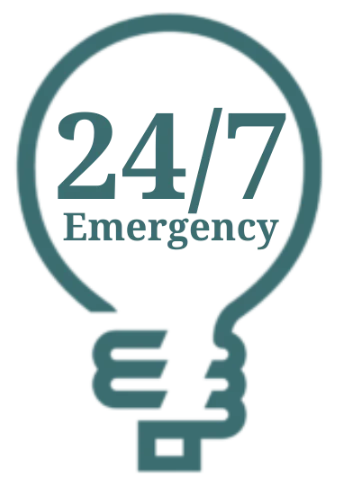A Guide to Fusebox Consumer Units
In this fusebox consumer unit guide we will answer some of the frequently asked questions we receive from customers ahead of their consumer unit change.
We will explain some of the important features of this vital piece of equipment in your home, and talk about some of the considerations we need to make when selecting the correct consumer unit for your installation.
About Heritage Emergency Electrician
Heritage Electrical offer a fusebox consumer unit upgrade service.
At Heritage, every decision we make is governed by the IET Wiring Regulations, guidance from the NICEIC competent persons scheme, and 20 years of experience.
We only choose to use certain brands due to their reliability and safety. Please get in touch if you would like any more information on anything discussed here, or would like to discuss your next project.
What a good fusebox consumer unit looks like
Here's what's covered:
A consumer unit, (sometimes called fuse board, electricity board or fuse box) is the means of distributing electricity throughout your home or business. It is situated after the main intake and electricity meter (both owned and maintained by your district network operator). Out of the electricity meter come 2 large cables – or “tails” – which supply your consumer unit. Everything from the consumer unit onward becomes your responsibility to maintain.
A consumer unit comprises of a metal (or plastic if it’s an older board) enclosure, and several devices inside for being able to isolate parts of your property from the electricity supply.
The tails from the meter feed a double pole main switch: if you turn this switch off, the entire installation supplied by this consumer unit will be isolated.
Downstream from the main switch will be individual circuit breakers. These breakers allow you to be a little more specific as to which part of the installation is isolated. Depending on how your installation has been designed and installed, you might have separate breakers for circuits such as:
• Downstairs sockets
• Upstairs lighting
• Kitchen cooker
• Garage
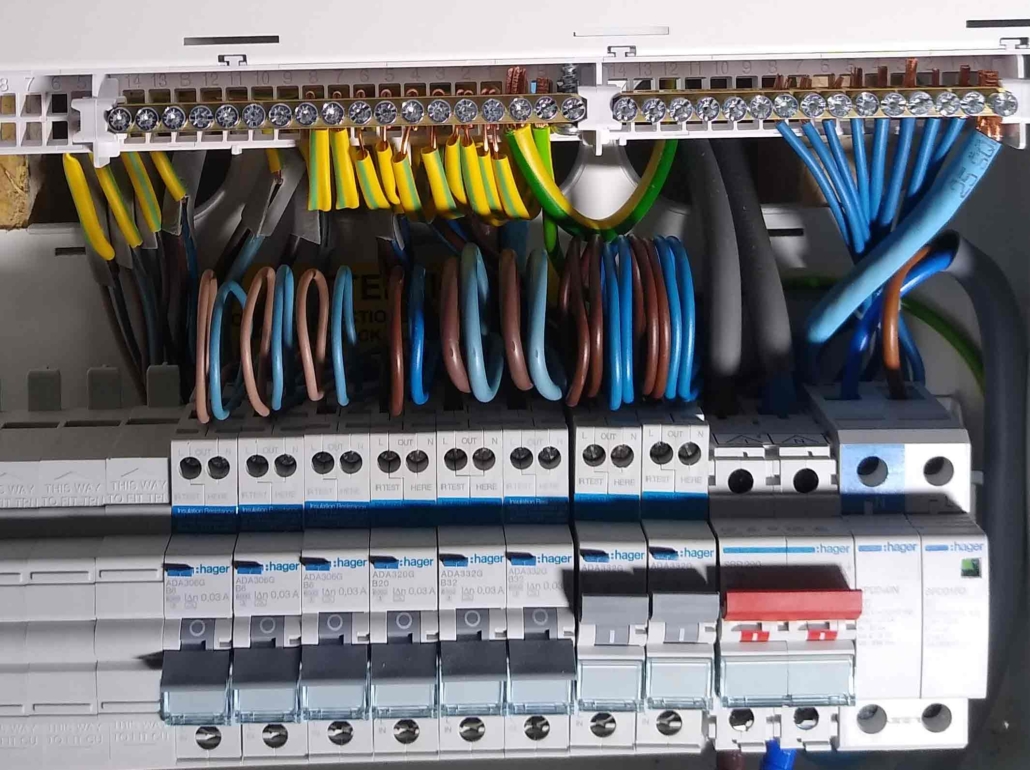
…and so on. A greater separation of items in your house results in less inconvenience if a fault occurs. For example if all the lighting in your home is controlled by one circuit, a single fault will knock out the lights in your entire home. As an example, a better idea would be to have lighting separated into upstairs, downstairs, and outdoor lighting. If a fault were to occur on the outdoor circuit, the other two would remain unaffected.
Book your consumer unit upgrade.
What is a Fuse Box Consumer Unit?
You will most likely have 2 main types in your existing unit:
MCBs
Miniature Circuit Breakers are designed to protect the wiring in the fabric of the building. If a fault occurs they will operate and isolate the circuit automatically. Depending on the size of the MCB, it might allow many 10s of Amps to flow before operating.
RCDs
Residual current devices are designed to protect the end user: you! They are very sensitive to a situation where current may be flowing to earth through an unintended path (i.e. from a metal switch, through the human body). They will operate when only 30 mA (0.03 Amps) is flowing: anything over around 0.01 Amps can be fatal.
Once a fault has been rectified, both these devices can be easily re-energised using the switch on the front.
Other devices include:
RCBOs
RCBO devices are a combination of the technology in both an MCB and an RCD in one handy device. They are roughly the same price as an MCB and an RCD if you were to purchase them separately. The sections below will explain why RCBOs are essential for the modern home.
SPD
A Surge Protection Device will protect your installation from surges originating outside your property. If you have expensive electronics in your home or business, this device will prevent them from being fried in the event of a surge!

3036 semi-enclosed re-wire fuse
These predate MCBs. If a fault occurs, you will have to (as the name suggests) re-wire them before you can get the power back on, and only after finding the fault. They are also not as sensitive as MCBs to potential faults.
Book your consumer unit upgrade.
What is a Protective Device?
As mentioned above, the more separation you can have between circuits, the less the inconvenience when a fault occurs. With a split RCD board, you will have 2 or perhaps 3 RCD units in the board. Each device will be protecting a number of circuits. If the RCD operates due to a fault, this will then knock out all of the circuits protected by that RCD. In other words, you might lose half of all power and lighting in your home due to a single fault on say, an outside light. Not only is this very inconvenient, but also extends the time taken to find the fault: 4 or 5 circuits may have to be tested individually to find the fault, rather than just one if you have an RCBO board.
The other big problem with split boards, is that the more often than not contain type AC RCDs. This type of RCD is not sensitive to the type of DC currents produced by the modern electronics we have in our homes. In fact, DC earth leakage can saturate a type AC RCD which means that tripping would not occur with an AC earth leakage fault either.
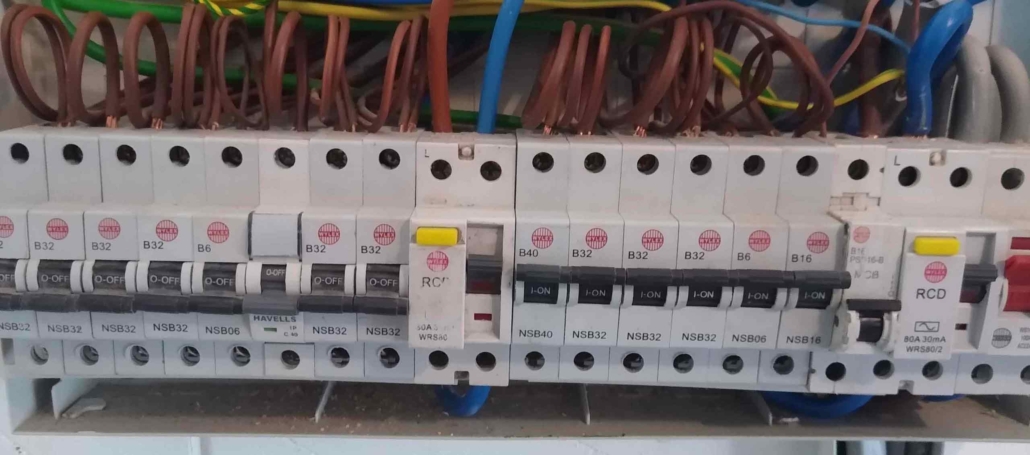
Jargon aside, we would specify that the modern home as a minimum should be fitted with type A RCDs (now a requirement of 18th Edition Amendment 2), which are sensitive to certain DC currents, and are much more suitable for the home with electronic equipment in.
Book your consumer unit upgrade.
The Problems With “Off The Shelf” RCD Split Boards
The size of the fusebox consumer unit you require will depend on the size of your home or business. You might have separate circuits for:
• Kitchen sockets
• Ground floor socket circuit
• Utility room circuit
• Upstairs socket circuits
• External socket circuit
• Oven
• Hob
• Smoke detectors
• Security alarm/data cabinet circuit
• External lights circuit
• Ground floor light circuits
• First floor light circuit
• Immersion heater
These circuits would be decided upon due to the load (how much power each circuit might pull) and earth leakage. For example, the kitchen requires its own circuit because you will have power hungry devices in there such as kettles and toasters.
Adding up all those circuits comes to 13 “ways”. Again, there is guidance which states that when upgrading a consumer unit there should be 20% of the capacity left free for expansion of the installation if required.
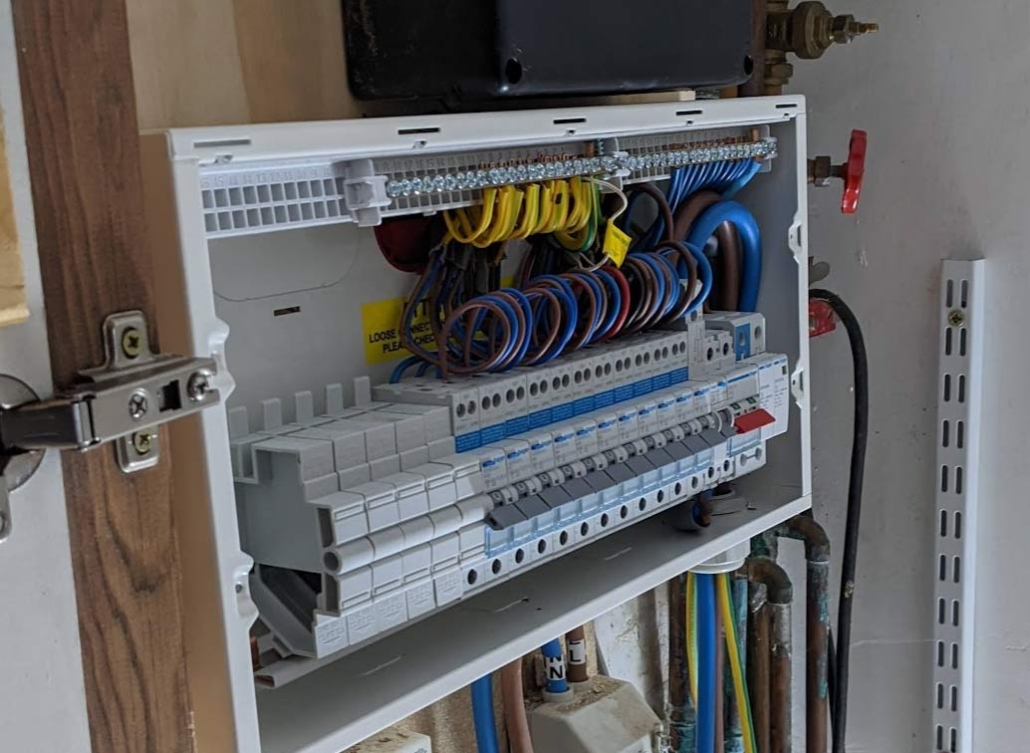
Recomendation
We would therefore recommend a fusebox consumer unit with a minimum of 16 ways to accommodate our circuits; plus enough spare ways for expansion in the future.
It might be that the chosen manufacturer only produces a 15-way or a 20-way. In this case we would have to opt for the larger unit to satisfy the 20% free space guidance.
Book your consumer unit upgrade.
What Size Fusebox Consumer Unit Should I Get?
There are two types of earth leakage:
• In the event of a fault
• Earth leakage by design
A example of the first might be current leaking to the metal shell of a kettle – definitely not intended! If you have an RCD and the leakage over 30mA then the RCD would protect you.
The second type is a byproduct of modern electronic devices. Whether it be your fridge, washing machine, TV, or computer, all these devices will be leaking current down the earth wire in your circuit. To give you an idea, a computer, screen, printer, and speakers might leak a total of 10mA : a third of the capacity of your RCD.
Enough of these devices on the same circuit would lead to what is referred to as “nuisance tripping”: there isn’t a fault per se, but nevertheless operation of the RCD device occurs.
It Does Happen!
We recently attended an electrical emergency in Devon where the customer had changed their electric car for a new one and tripping had occurred. The new car was leaking more current to earth when charging which was causing this nuisance tripping in his split-board RCD. This leads to another reason as to why split boards are a bad idea in modern houses. Not only is nuisance tripping, well, a nuisance, but the 18th Edition Wiring Regulations stipulates that accumulation of earth leakage currents should not exceed 30% of the rating of the RCD. As we mentioned before, an RCD will operate once earth leakage reaches 30mA. Our computer setup which is leaking 10mA already puts that RCD/RCBO at its capacity according to the IET Wiring Regulations.
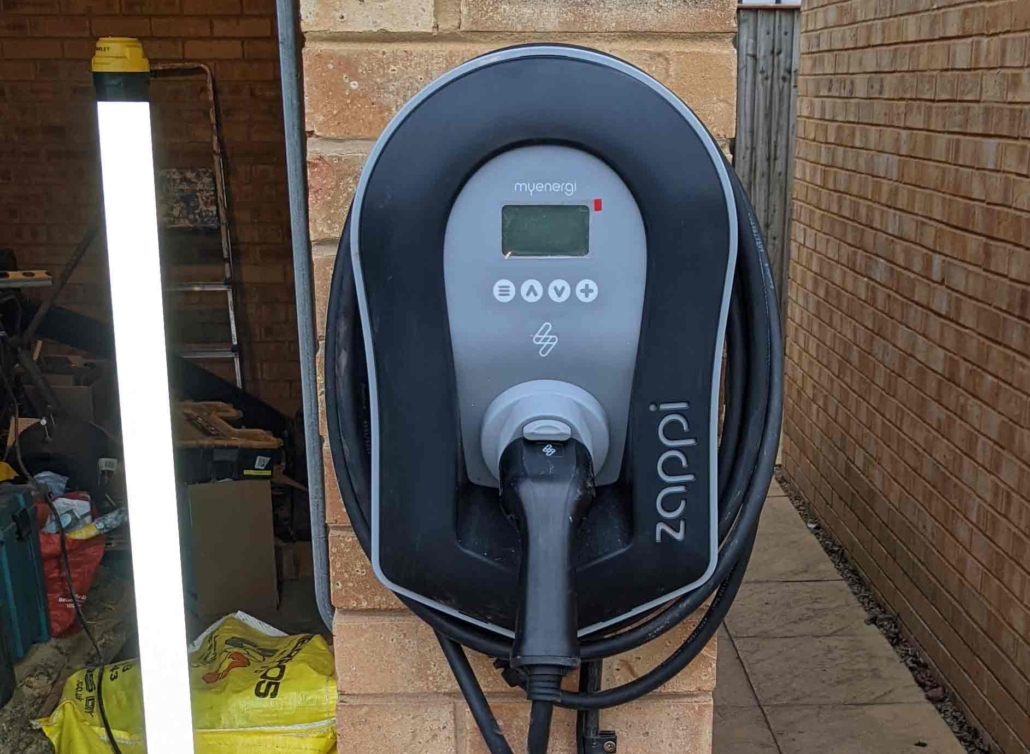
Heritage Electrical take into account the electronic devices and load requirements of your installation when designing and specifying a consumer unit. This will nearly always be an RCBO-based consumer unit. This will allow us to comply with the IET Regulations for earth leakage; allow us to ensure you will be safe by using type A RCBOs; and will allow us to ensure minimum inconvenience in the event of a fault by including the right amount of separation between circuits.
Please see this article from Professional Electrician magazine for more information.

